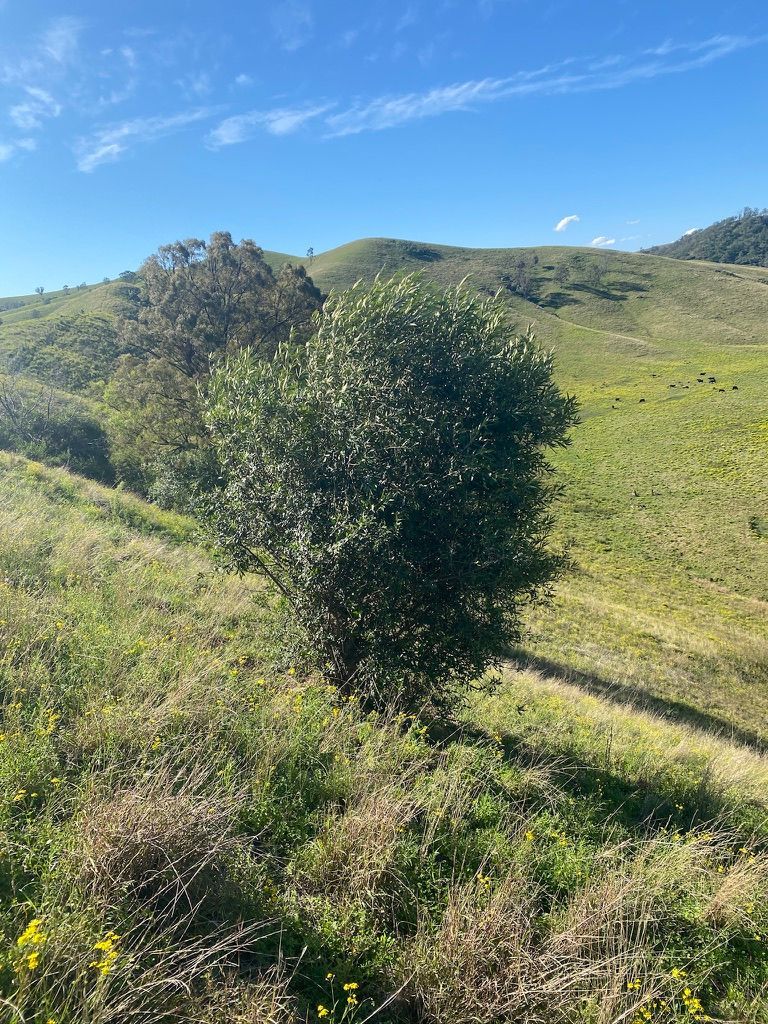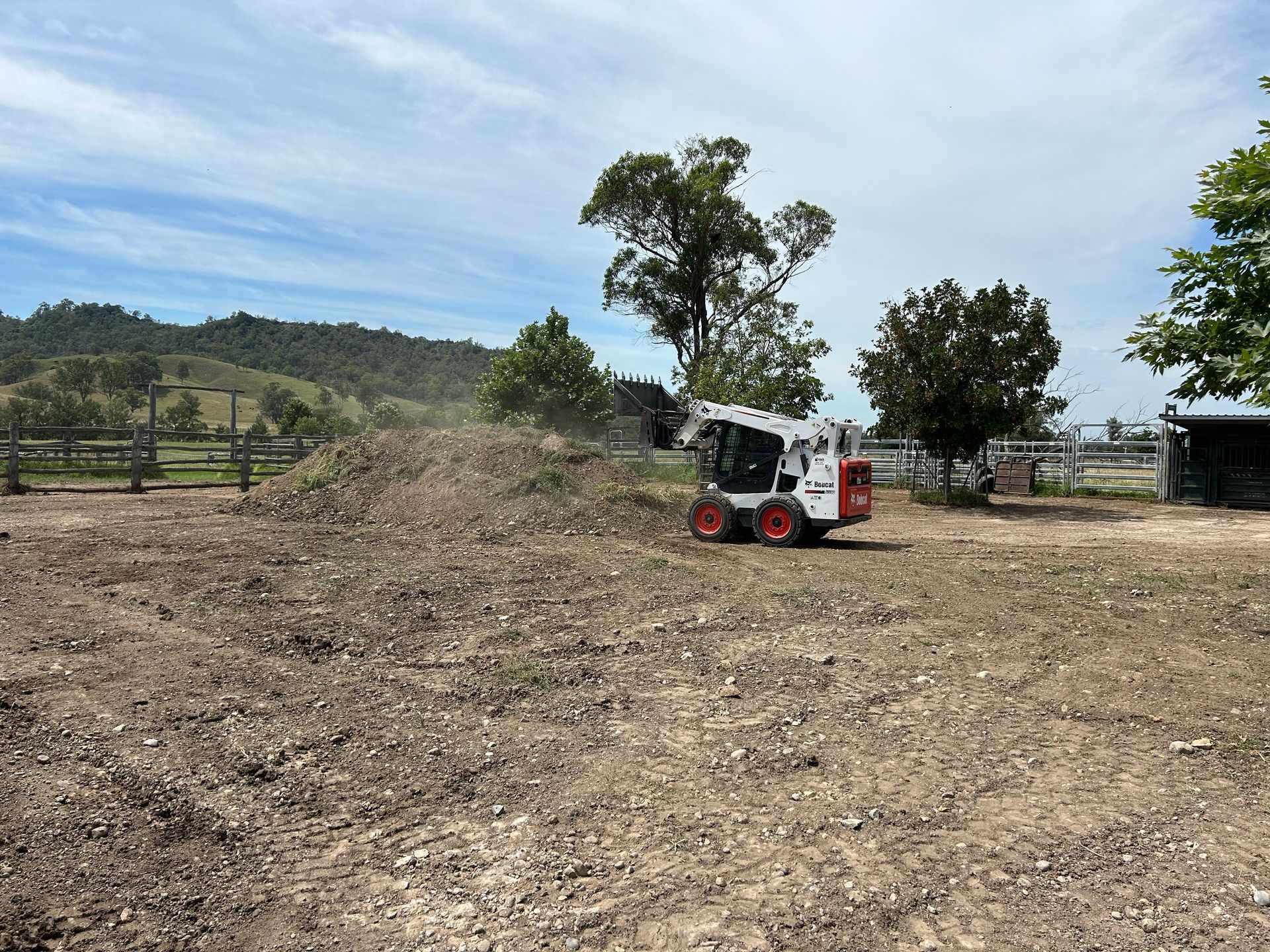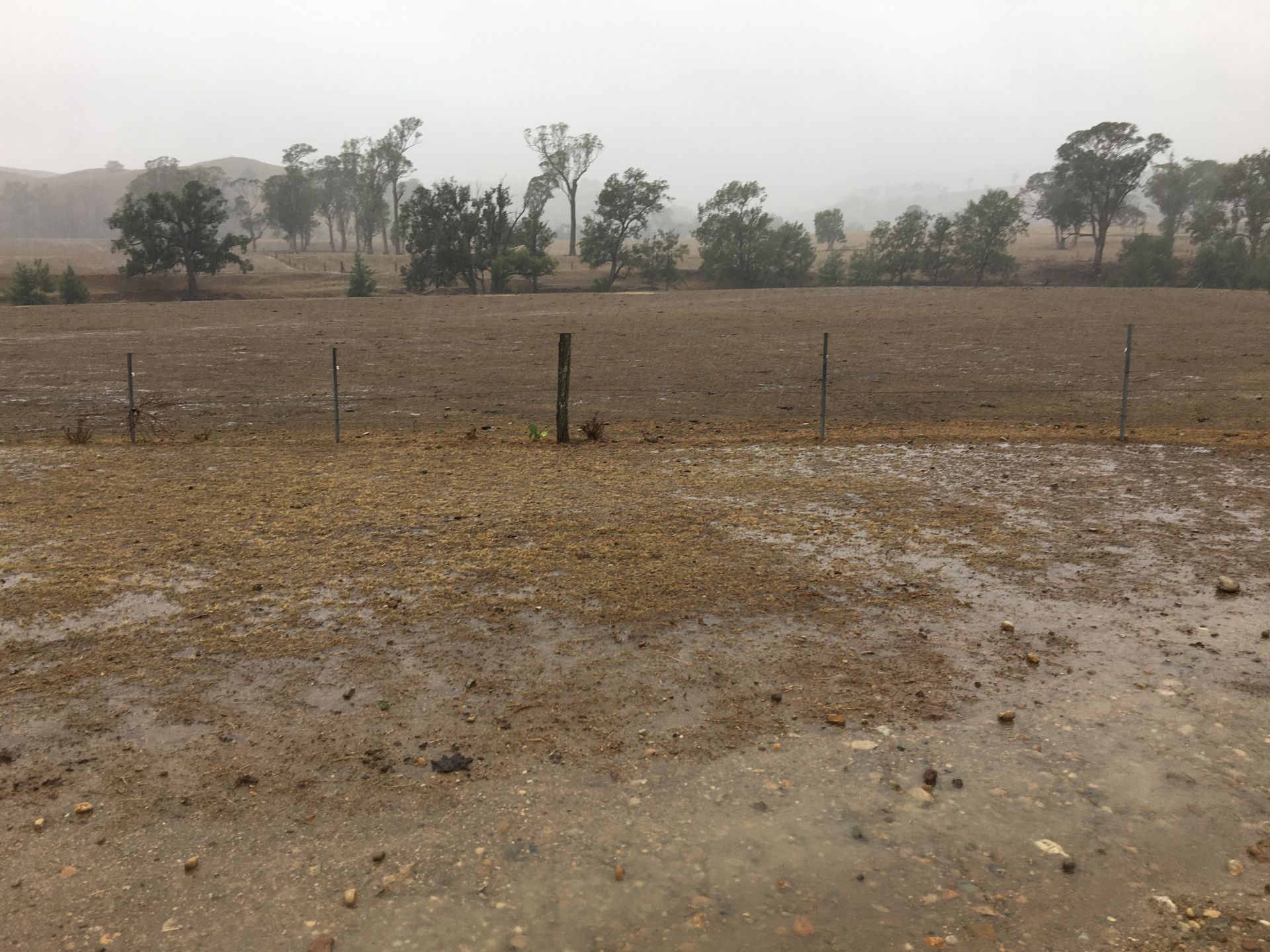Bore drilling at Greylands
- By Matt Bailey
- •
- 17 Nov, 2024
An additional source of stock water for future droughts at Greylands.

Seasons change at Greylands, just like everywhere else in Australia. Our location in the Hunter Vallley is prone especially to extremes of drought, heat and during wetter periods, flooding. Temperatures in Summer regularly reach 42 deg C and we have even had as high as 48degC one year. During dry or drought periods, bushfires are an ever-present risk. While there can be frosts in winter, there is never snow. Given Greylands has hilly country, we don't have the issue of floodplain flooding but access can be cut off to various parts of the property until Goorangoola Creek flooding subsides. There have been some extreme droughts in the past at Greylands. There was a particularly lengthy drought that eventually ended early 2020. Over the 2019/2020 Summer there were unprecedented fire conditions throughout the majority of Australia's East Coast . Vast areas of bushland and farmland burned in out of control fires, throughout Victoria, NSW, ACT and Queensland. More recently, during 2023, there was a more sudden slide into very dry conditions resulting in a heavy impact on cattle in the region, stress on water storage and an unexpected boundary bushfire at Greylands in winter, then another one in the months following. Goorangoola Creek runs through the heart of Greylands and provides an excellent source of stock water the majority of the time. Additionally, in another part of Greylands there is fairly secure water for stock in a paddock with a smaller but permanent creek - Cross Creek. However, during the more severe droughts, these creeks stop running and water holes dry up one by one. During drought, temperatures are generally hotter too, so water dries up very quickly if there is no rain, especially when summer temperatures are in the 30s or 40s day after day. During drought, bushfire risk increases too and there is generally less water available to fight fires when the risk of bushfires is the highest.
Other paddocks without creeks are very reliant on water storage in dams for our cattle. Over the years, Greylands owner Ian Bailey, assisted by his wife Margaret and the Greylands farm manager, have made the strategic decision to add new dams in paddocks where historically there has been pressure on stock water reserves during significant droughts. Successive Bailey generations before us also added dams for cattle drinking water in each paddock without a permanent creek. There have been times when dams have dried out completely or reached very low levels. Water quality then suffers when the dam water levels get too low. Cattle often need to be sold off during times of drought if there is insufficient grass and water for the number of cattle on the property. During droughts, this is a common scenario for many other cattle farmers too, so there are large numbers of cattle being offered to the market, driving prices down at the very time running costs often increase. Unfortunately with forced sales of good quality breeding cattle during droughts, there is then the cost of buying back other quality breeders when seasons change for the better. Buying back good quality breeders once the rain comes is generally a very expensive exercise, because there is often a shortage of quality breeders after the drought breaks: all cattle breeders are wanting to replace their breeding stock at the same time, once the rain comes and the grass is growing again.
When there have been years of hard work developing genetics for quality cattle, it is a particularly hard decision to let go of high quality breeding cattle during times of drought, due to a shortage of feed and/or water - cattle that could otherwise be retained if only there had been more water or feed available. Hay can of course be bought, but during droughts, there is often a shortage of hay available to purchase (due to the fact that when Greylands is in drought, often a lot of the Australian East coast is often also drought-affected). Over the years El Nino (drier than usual or drought conditions) and La Nina (wetter than usual or flooding conditions) has tended to correlate pretty well with conditions at Greylands. ENSO (El Nino Southern Oscillation) tends to predict these conditions fairly reliably for Australia's East coast. There are other climate indicators/drivers (e.g SAM - Southern Annular Mode, IOD - Indian Ocean Dipole) we also keep an eye on, which help to at least give some idea of long range weather forecasts, for planning. Apart from droughts, we have also had major floods in the past. The Hunter Valley had a particularly severe flood in 1955, at which time the Hunter River broke its banks and flooded Singleton. Maitland also had severe flooding further downstream. Goorangooola Creek that runs through Greylands becomes a raging torrent of water during floods.
Dams fill up during wetter seasons and serve as water reservoirs for drier seasons, but what happens when dams dry out? That creates a massive problem for us at Greylands - cattle then need access to other dams, which puts further pressure on those dams' water storage. If dams dry out completely or become too low for the water to be usable, dams are often dredged with an excavator at those times. Mud that accumulates on the bottom of dams reduces water storage capacity within the dam and increases the risk of cattle getting stuck in the thick mud when they come to the dam to drink, at a time when they are already weaker due to drought conditions. Once the dam has been cleaned out, water quality improves when it fills back up during wetter times, as there is less mud mixed in with the water.
Many farms around Australia have drilled for water, creating bores. Water quality in those bores can vary enormously. Water in some bores can be too salty for stock to drink. In April 2024 the decision was made to apply for consent and drill for water. Greylands now has a bore ready for stock drinking water for the next drought. While more infrastructure will be required to get water to where it is needed for drinking water for Greylands cattle, we are certainly glad to have a bore ready. While the bore water flow rate is not what we had hoped for, the water quality from the bore is very good, so we are thankful to have a backup source of cattle drinking water.
As Spring finishes and we head into Summer soon, grass and water conditions are currently good at Greylands. However we are well aware that the next drought will come at some stage, often without a lot of warning. When that time comes, we will be very glad to have the bore for backup drinking water for Greylands cattle.
Other paddocks without creeks are very reliant on water storage in dams for our cattle. Over the years, Greylands owner Ian Bailey, assisted by his wife Margaret and the Greylands farm manager, have made the strategic decision to add new dams in paddocks where historically there has been pressure on stock water reserves during significant droughts. Successive Bailey generations before us also added dams for cattle drinking water in each paddock without a permanent creek. There have been times when dams have dried out completely or reached very low levels. Water quality then suffers when the dam water levels get too low. Cattle often need to be sold off during times of drought if there is insufficient grass and water for the number of cattle on the property. During droughts, this is a common scenario for many other cattle farmers too, so there are large numbers of cattle being offered to the market, driving prices down at the very time running costs often increase. Unfortunately with forced sales of good quality breeding cattle during droughts, there is then the cost of buying back other quality breeders when seasons change for the better. Buying back good quality breeders once the rain comes is generally a very expensive exercise, because there is often a shortage of quality breeders after the drought breaks: all cattle breeders are wanting to replace their breeding stock at the same time, once the rain comes and the grass is growing again.
When there have been years of hard work developing genetics for quality cattle, it is a particularly hard decision to let go of high quality breeding cattle during times of drought, due to a shortage of feed and/or water - cattle that could otherwise be retained if only there had been more water or feed available. Hay can of course be bought, but during droughts, there is often a shortage of hay available to purchase (due to the fact that when Greylands is in drought, often a lot of the Australian East coast is often also drought-affected). Over the years El Nino (drier than usual or drought conditions) and La Nina (wetter than usual or flooding conditions) has tended to correlate pretty well with conditions at Greylands. ENSO (El Nino Southern Oscillation) tends to predict these conditions fairly reliably for Australia's East coast. There are other climate indicators/drivers (e.g SAM - Southern Annular Mode, IOD - Indian Ocean Dipole) we also keep an eye on, which help to at least give some idea of long range weather forecasts, for planning. Apart from droughts, we have also had major floods in the past. The Hunter Valley had a particularly severe flood in 1955, at which time the Hunter River broke its banks and flooded Singleton. Maitland also had severe flooding further downstream. Goorangooola Creek that runs through Greylands becomes a raging torrent of water during floods.
Dams fill up during wetter seasons and serve as water reservoirs for drier seasons, but what happens when dams dry out? That creates a massive problem for us at Greylands - cattle then need access to other dams, which puts further pressure on those dams' water storage. If dams dry out completely or become too low for the water to be usable, dams are often dredged with an excavator at those times. Mud that accumulates on the bottom of dams reduces water storage capacity within the dam and increases the risk of cattle getting stuck in the thick mud when they come to the dam to drink, at a time when they are already weaker due to drought conditions. Once the dam has been cleaned out, water quality improves when it fills back up during wetter times, as there is less mud mixed in with the water.
Many farms around Australia have drilled for water, creating bores. Water quality in those bores can vary enormously. Water in some bores can be too salty for stock to drink. In April 2024 the decision was made to apply for consent and drill for water. Greylands now has a bore ready for stock drinking water for the next drought. While more infrastructure will be required to get water to where it is needed for drinking water for Greylands cattle, we are certainly glad to have a bore ready. While the bore water flow rate is not what we had hoped for, the water quality from the bore is very good, so we are thankful to have a backup source of cattle drinking water.
As Spring finishes and we head into Summer soon, grass and water conditions are currently good at Greylands. However we are well aware that the next drought will come at some stage, often without a lot of warning. When that time comes, we will be very glad to have the bore for backup drinking water for Greylands cattle.







